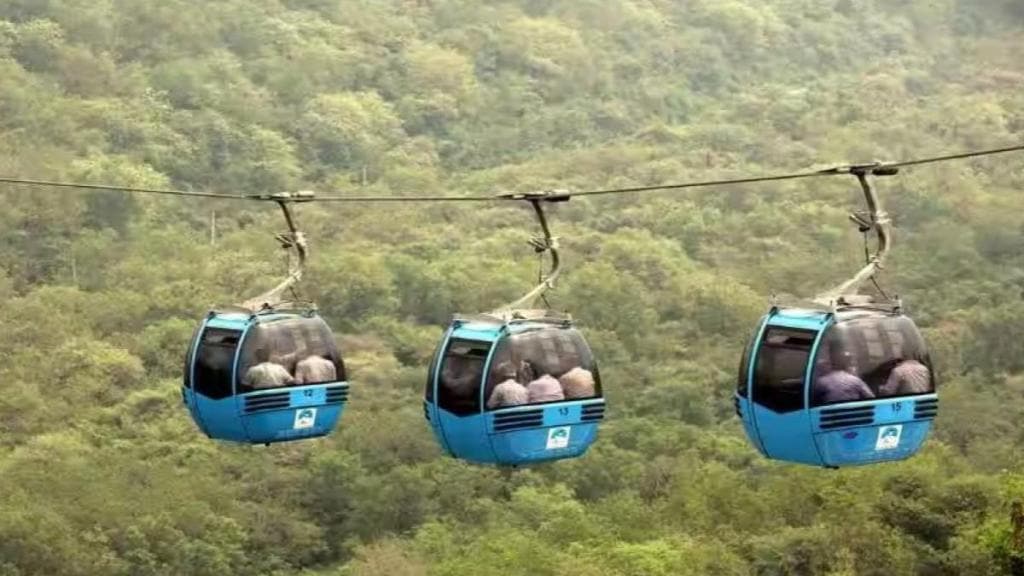The challenge of establishing efficient transport networks in hilly and inaccessible regions has long plagued infrastructure development in India. Traditional road and rail construction in such areas are not only difficult but often impractical. In light of this, ropeway networks are emerging as a promising solution to enhance last-mile connectivity, transportation efficiency, and alleviate congestion in urban areas. Recognizing the potential of ropeways, the central government has taken a decisive step by prioritizing and providing significant impetus to the ropeway sector.
ALSO READ
Budget 2024 Live Updates: Union Budget 2024 Live Streaming, FM Nirmala Sitharaman Budget 2024 Speech Live
Railway Budget 2024 Live Updates: Indian Rail Budget 2024 Live Streaming
Budget 2024 Income Tax Live Updates: Income Tax Slab Rate Change Budget 2024 Live Updates
Budget 2024 Stocks to Focus: Union Budget 2024 Impact on Share Market Today
A watershed moment for the sector came with the announcement of the Parvatmala Scheme in the Union Budget 2022-23. This National Ropeways Development Programme aims to address connectivity challenges in challenging terrains, specifically targeting regions like Himachal Pradesh, Uttarakhand, Jammu-Kashmir, and the North-East. The primary objectives include enhancing connectivity, facilitating convenience for commuters in difficult hilly areas, and promoting tourism.
Eco-friendly mode of transportation
Finance Minister Nirmala Sitharaman, during the budget announcement, underscored that the scheme would be executed through a Public-Private Partnership (PPP) model, emphasizing its eco-friendly nature as an alternative to conventional roads. The responsibility for developing ropeway projects under the scheme nationwide has been entrusted to the National Highways Logistics Management Ltd (NHLML), a 100%-owned special purpose vehicle of the National Highways Authority of India (NHAI).
The ropeway industry in India has witnessed substantial growth in recent years. With over 70 ropeways currently operating across the country, the NHLML has received more than 260 project proposals from various states. For the fiscal year 2023-24, the NHLML has set a target to award 20 ropeway projects. RITES Limited, a Miniratna PSU under the Ministry of Railways, has been conducting feasibility studies for ropeway projects in states like Uttar Pradesh, Mizoram, Manipur, Tamil Nadu, and Andhra Pradesh, aligning with the government’s focus on sustainable transport modes.
Progress so far
- Ropeway projects totaling 60 km in length are scheduled for award by the fiscal year 2023-24.
- Among these, the construction of a 3.85 km ropeway project in Varanasi is currently underway.
- Bids have been received for two ropeway projects with a combined length of 3.2 km, namely Bijli Mahadev (2.34 km) and Dhosi Hill (0.88 km)
- Ropeway projects spanning 30 km are currently under the bidding process, encompassing seven projects: Brahmagiri – Anjaneri, Tikitoriya Mata Temple, Sangam (Prayagraj), Mahakaleshwar Ujjain, Shankaracharya Temple, Gaurikund – Kedarnath, and GovindGhat – Ghangaria – Hemkund Sahib
First urban transport ropeway
Prime Minister Narendra Modi in March last year laid the foundation stone for the country’s first urban transport ropeway in Varanasi, a 3.75 km long system set to enhance local and visitor travel. Furthermore, PM Modi inaugurated the foundation stone for the Gaurikund-Kedarnath project in Uttarakhand in October 2022. Upon completion, the 9.7 km long ropeway will become the world’s longest, reducing travel time between the two locations from 6-7 hours to just 28 minutes.
Ropeway projects, utilizing 3S (a type of cable car system) or equivalent technologies, have the capacity to convey 6000-8000 passengers per hour, ensuring rapid and convenient travel for commuters.
Benefits of ropeway infra
The long-term benefits of ropeway infrastructure are vast. Economically, ropeways provide a cost-effective mode of transportation, requiring fewer resources, resulting in lower maintenance costs, and quicker implementation. In addition to being economical, ropeways excel in speed and efficiency, offering a swift means of transportation by navigating challenging landscapes.
Crucially, ropeways contribute to environmental sustainability by operating on clean energy sources, such as electricity, reducing reliance on fossil fuels and minimizing carbon emissions. This eco-friendly approach ensures a smaller ecological footprint compared to traditional road and rail networks, preserving the natural beauty of the landscapes they traverse.


